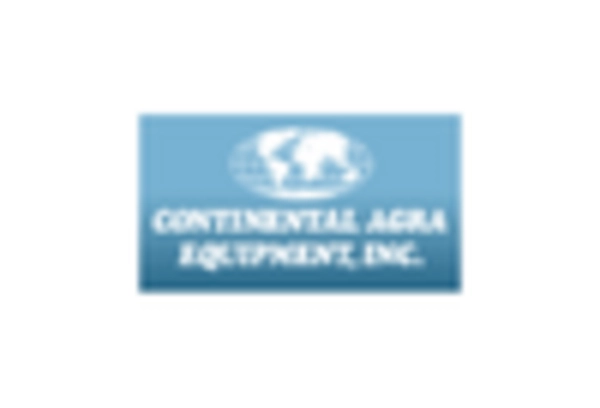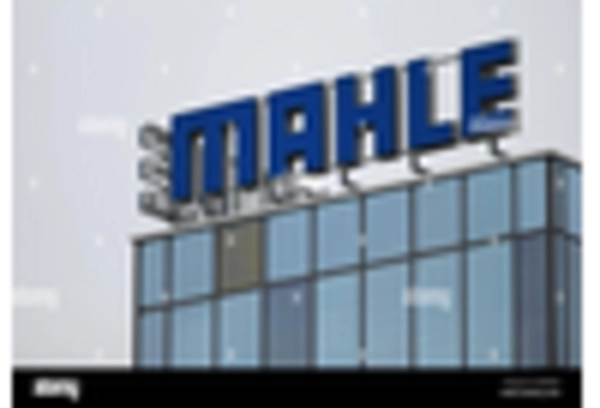Rising Demand for Electric Vehicles
The increasing adoption of electric vehicles (EVs) is a primary driver for the Automotive Battery Thermal Management Market. As consumers and manufacturers shift towards sustainable transportation solutions, the need for efficient battery thermal management systems becomes paramount. In 2025, it is estimated that the EV market will account for a substantial percentage of total vehicle sales, necessitating advanced thermal management solutions to enhance battery performance and longevity. This trend indicates a growing market for thermal management technologies, as they play a crucial role in maintaining optimal battery temperatures, thereby improving efficiency and safety. Consequently, the Automotive Battery Thermal Management Market is likely to experience significant growth as manufacturers invest in innovative thermal management solutions to meet the demands of the expanding EV sector.
Growth of Renewable Energy Integration
The integration of renewable energy sources into the automotive sector is emerging as a key driver for the Automotive Battery Thermal Management Market. As the shift towards sustainable energy solutions accelerates, the demand for efficient battery systems that can effectively manage thermal conditions becomes increasingly important. In 2025, the market is expected to expand as manufacturers seek to develop thermal management solutions that optimize battery performance in conjunction with renewable energy sources. This trend indicates a growing recognition of the importance of thermal management in enhancing the overall efficiency of electric vehicles powered by renewable energy, thereby creating new opportunities within the Automotive Battery Thermal Management Market.
Consumer Awareness and Demand for Safety
Consumer awareness regarding battery safety and performance is a significant driver for the Automotive Battery Thermal Management Market. As electric vehicles become more prevalent, consumers are increasingly concerned about battery safety, particularly in extreme weather conditions. Effective thermal management systems are essential for maintaining battery temperatures within safe limits, thereby preventing overheating and potential hazards. In 2025, the market is likely to see a surge in demand for advanced thermal management solutions that address these safety concerns. This trend suggests that manufacturers who prioritize safety in their thermal management systems will likely gain consumer trust and enhance their market position within the Automotive Battery Thermal Management Market.
Regulatory Pressure for Emission Reductions
Regulatory frameworks aimed at reducing emissions are driving the Automotive Battery Thermal Management Market. Governments worldwide are implementing stringent regulations to promote cleaner transportation solutions, which in turn increases the demand for electric vehicles and their associated technologies. As manufacturers strive to comply with these regulations, the need for effective thermal management systems becomes critical to ensure battery efficiency and safety. The Automotive Battery Thermal Management Market is expected to benefit from this regulatory pressure, as companies invest in advanced thermal management solutions to meet compliance standards while enhancing vehicle performance. This dynamic indicates a robust market potential for thermal management technologies in the automotive sector.
Technological Advancements in Battery Systems
Technological innovations in battery systems are significantly influencing the Automotive Battery Thermal Management Market. The development of high-capacity batteries, such as solid-state batteries, necessitates advanced thermal management solutions to ensure optimal performance and safety. As these technologies evolve, the complexity of thermal management systems increases, leading to a demand for more sophisticated solutions. In 2025, the market for battery thermal management systems is projected to grow as manufacturers seek to integrate cutting-edge technologies that enhance battery efficiency and lifespan. This trend suggests that companies focusing on research and development in thermal management technologies will likely gain a competitive edge in the Automotive Battery Thermal Management Market.


















Leave a Comment